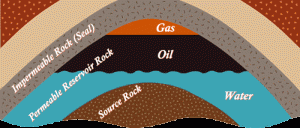
The study conducted by researches of Kazan Federal University describes the theoretical framework and results of using a rapid three-dimensional super element model of oil field development.
Simulation of oil field development is traditionally performed using full-scale filtration models (Roxar Tempest More, S?hlumberger Eclipse, etc.) on ?omputational grids with a cell size of approximately several tens of meters horizontally and tens of centimeters vertically. Such models require specification of an excessive number of parameters, and in case of large fields, they contain millions of cells. This complicates their adaptation and makes it virtually impossible to use them for multivariant prediction calculations. To overcome these problems when optimizing the system of oil field development helps a super element modeling method.
Testing of the model on the real oil fields and comparison between the results from numerical simulation and the corresponding results obtained using the traditional models on small grids confirm the wide opportunities and prospects of the super element model for rapid calculations.
The model makes it possible to speed up the calculation of two-phase filtration in an oil reservoir by hundreds of times due to the use of large computational cells – super elements, the number of which corresponds to the number of wells in the field.
The super element model is able to describe arbitrarily oriented wellbores, hydraulic fractures, tectonic faults and geological bodies. In each individual case, this requires using auxiliary fine grids and solving the corresponding mathematical problems.
Accuracy of the numerical solution is ensured by a formulation of the problem in terms of the smooth mean fields of pressure and saturation with a selective refinement of the solution in the vicinity of the wells on independent detailed nested grids.
The model is implemented by an actual software system for maintenance and monitoring of oil field development, which helped build the super element models for the development of a number of fields in Kazakhstan and Russia.










